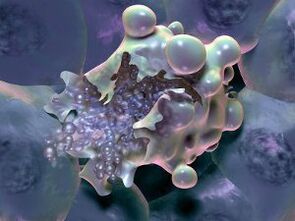The pain in the joints not only complicates life, but, as a rule, indicate dangerous inflammatory and destructive processes that gradually constrain movements, and if the treatment or its absence is not in irreversible deformation and disability.
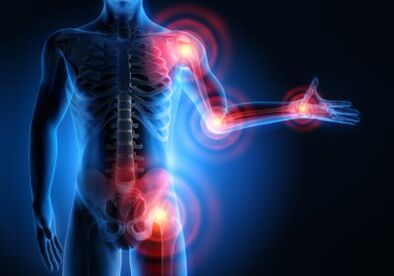
Arthrosis is the second largest cause of disability after cardiovascular diseases.At the same time, arthritis and arthrosis are very often struck by the still working population, that is, people become disabled - or they are forced to constantly overcome the pain in order to earn a living.
So why do joint pains occur, and what are the methods available to Russians today, which will not only temporarily relieve pain, but eliminate inflammation and stop the destruction of the joint?
Arthritis and arthrosis - differences
Arthritis and arthrosis have similar names, since both of these diseases affect the joints.They differ in the nature of changes in the joints.
AtarthritisPain is associated with inflammation of the joint tissue.In this disease, a synovial shell suffers, in which blood and lymph vessels, nerve endings are concentrated.Accordingly, this affects both the eating of the joint and the production of articular lubrication (synovial fluid), which nourishes cartilage.
Arthritis can developAt any ageincluding in children and adolescents (juvenile arthritis).Moreover, the disease can be affectedAlmost any joints, includingSmall (arthritis of the fingers), and multiple joint damage can also be observed -polyarthritis.
Long existing arthritis leads to arthrosis, since the joint, in particular, cartilage tissue suffers for a long time from the feed deficiency, which comes from synovial fluid.It is important not to “extinguish” inflammatory reactions with anti -inflammatory drugs, namelyfight the cause of inflammation, for example, with the help of funding.
AtarthrosisFirst of all, observedDestruction of cartilage, covering the surface of the bone (and with a neglected process - and the bone tissue itself).The cartilage ceases to cope with the load that appears on him, and he begins to collapse faster than he manages to recover.The cartilage fabric is softened, normal sliding of the articular surfaces is disturbed, any movements are accompanied by pain.
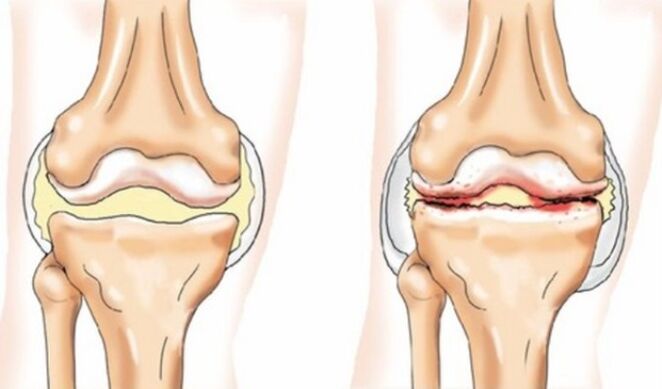
Arthrosis appears more oftenAfter 40 years.The lesion of large joints, such as knees (gonarthrosis) and hip joints (coksartrosis), is more common, and is the cause of disability and disability.Less common occurs osteoarthrosis of the fingers, arthrosis of the thumb, the temporomandibular joint, damage to the shoulder, elbow joint, etc.
Symptoms and signs
Symptoms of arthritis:
- synovitis, that is, swelling, increased sensitivity or soreness when touching, limiting the mobility of the joint;
- acute, aching pain, both in motion and at rest;
- Morning stiffness, due to the fact that edema develops in the joint time in the joint time.It takes 40-60 minutes after the start of movement.
With arthritis, general features characteristic of inflammation can also be observed: fever, chills, sweating, general weakness.It can be manifested by headaches, weight loss.Symptoms of the disease are also observed, which caused inflammation: damage to the heart with rheumatoid arthritis, lungs and other organs with tuberculosis, etc.
Symptoms of arthrosis:
- The pain that occurs in daytime physical exertion, and not at rest.For example, pain in the knee and hip joint when walking, running, squats, walking up the stairs, etc. Then, when moving, the pain disappears (starting pains).There is severe pain in the knee and crunch when bending-extinguishing.
- Short -term “starting pains” after rest periods associated with the fact that the articular surfaces on which detrites settled (the result of the destruction of cartilage and bone tissue) rub on each other.15-20 minutes after the start of movement, the pain passes, as Detrit is pushed out.
- Continuous stupid night pains are more often at the beginning of the night due to venous stagnation.
Arthrosis is often accompanied by inflammatory reactions.Respectively, pain and swelling are observed, as in arthritis, and the disease itself is calledArthroso-arthritis.
With prolonged arthrosis, there is often a limitation of mobility due to degenerative changes in the muscles, tendons (the so-called contractures), occursjoint deformation.Therefore, the disease is often calleddeforming arthrosisordeforming osteoarthrosis.
Stages and degree of osteoarthritis
There are several stages of osteoarthritis, which, as a rule, are recognized by radiological pictures:
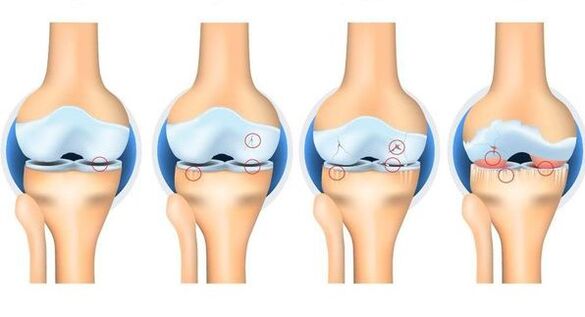
- Osteoarthrosis of the 1st degree - changes in bone and cartilage are weakly expressed, as a rule, when conducting computed tomography.Pain and swelling occurs after moderate physical activity.The swelling of the joint passes after rest.
- Osteoarthrosis of the 2nd degree - cartilage tissue begins to collapse, the growths of bone tissue (osteophytes) appear along the edges of the joint, the joint gap narrows, which leads to constant pain.Swelling and pain become constant.
- Osteoarthrosis 3-4 degrees-extensive destruction of cartilage, as well as deprived of the protection of bone tissue, is observed.There is constant swelling, the work of the ligaments, muscle function, which leads to joint deformation, is observed.The axial load in the joint is broken: “o” or “x” deformation in the joints.
Which doctor to contact?
If there are suspicions of arthritis or arthrosis, you need to consult a doctor for the correct diagnosis.In a regular clinic, this problem is addressed to a rheumatologist or traumatologist orthopedist, less often to the surgeon.In large diagnostic centers, you can get to an appointment with an arthrologist.This is a specialist who is directly engaged in joint diseases.
Causes of arthritis and arthrosis
The main causes of arthritis:
- Rheumatoid(sometimes they say rheumatic) autoimmune disease, when the body's protective immune cells for some unknown reasons begin to kill their own cells of the body, taking them as foreign (Rheumatoid arthritis).The nature of this disease is not completely clear.The disease more often affects women (3-5 times, according to various sources).Juvenile rheumatoid arthritis (juvenile idiopathic arthritis) is also found - a children's form that occurs in children and adolescents under 16 years of age.
- Infectious diseases, in which arthritis symptoms are observed, for example, tuberculosis, brucellosis, tick -borne borreliosis, etc.
- Non -infectious disease(psoriasis, systemic lupus erythematosus, etc.)
- Metabolic disorders, for example, gout.
The main causes of arthrosis:
- Injury- The most common reason.
- Congenital dysplasia(violation of the articular surfaces of the bones) of the joint (for example, dysplastic coksartrosis).In this case, the joints are excessively mobile, an increased load falls on them and the wear is faster.
- Long existing arthritis(rheumatoid arthritis, joint tuberculosis, etc.).Violations of metabolism in the synovial fluid leads to insufficient nutrition of cartilage, slowing down the processes of renewal of dead cells and provokes its destruction.
- Excessive physical activity, in particular, when engaged in professional sports or monotonous production operations.It is noted that in seamstresses most often occurs arthrosis of the joints of the hands, in workers using a jackhammer - elbow and shoulder joints.In other words, first of all, the cartilage that has experiences the maximum load for a long time suffers.
- Hormonal disorders.In women, this is often associated with menopause.
Regardless of what was a specific cause of arthritis or arthrosis, the main problem is the violation of the balance between the processes of destruction and restoration in the joint tissues.
At the cellular level, this means that in the joint:
- accumulatesExcess damaged and dead cellswhich the body does not have time to remove;
- not enough new functional cells are formed, which should replace the dead cells and ensure the correct functioning of the joint.
The difference in the reactions of the body with arthritis and arthrosis is explained by the difference in the tissues of the joints that are affected.
With arthritis, damaged cells prevail in the synovial membrane and synovial fluid, and there the process of inflammation is launched there.Edema is a necessary body reaction to combat excess damaged cells in soft tissues.
With arthrosis, damaged cells prevail in cartilaginous tissue, where another protection mechanism works: replacing damaged functional cells with connective tissue (scars), which is not capable of performing depreciation functions and does not have the property of elasticity, elasticity.
An excess of damaged cells can occur at a time due to injury, hypothermia, etc. In other cases, the accumulation of dead cells, a decrease in the functionality of the joint tissue occurs gradually due to daily loads (for example, when playing sports, heavy or monotonous physical work), impaired innervation, metabolic, hormonal and other processes.In this regard, it is of great importance in the treatment of arthritis and arthrosis of risk factors.
Risk factors
All risk factors for arthritis or arthrosis are associated with situations where the processes of cell death in the joint begin to prevail over the processes of recovery:
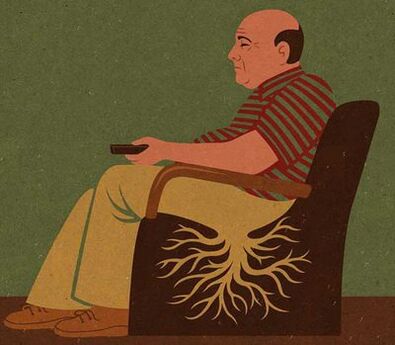
- Hypodynamia.A sedentary lifestyle leads to a small microvibration of muscle fibers, the development of stagnant processes in tissues, insufficient lymph flow and capillary blood flow, and, accordingly, leads to increased damage and premature death of healthy joint cells of the joint.
- Overweight.Excess body weight increases the load on the support joints - hip and knee.In addition, the fat layer complicates the flow to the joints of the blood, which is why the nutrition of cartilage is disturbed.It is noted that women more than weight suffer from knee arthrosis 4 times more often than their slender peers.It is believed that a decrease in body weight per 1 kg reduces the load when walking for each knee or hip joint by 4 kg.
- Spinal diseases(osteochondrosis, intervertebral hernia).In the spinal column there is a spinal cord through which nerve impulses pass to the muscles.If the passage of impulses is broken, the muscles do not work harmoniously and in insufficiently amortize the blow when jumping, lowering the stairs, running and walking.Accordingly, even with natural daily loads of the joints, the joints of the joints are damaged and die more often.
- Elderly age.The resources of the body are gradually depleted.Tower of fabrics occurs everywhere, including in joints, at different speeds, depending on the action of damaging factors and genetic predispositions.
Infections and non -infectious diseases in most cases are only a “trigger”.Arthritis occurs, as a rule, in the presence of the above risk factors.Those.Inflammation occurs against the background of existing problems - insufficient blood flow, lymph flow, stagnation in the joints.Healthy cells, as a rule, effectively protect against infections and other “attacks”.Therefore, it is important to treat not only the underlying disease that gave rise to arthritis, but also the joints themselves.
Based on this general understanding, the principles of effective treatment of joints follow.
Principles of effective joint treatment
The longer and stronger the destruction processes prevail over the recovery process, the faster the moment of irreversible changes begin.In this regard, it is important as soon as possible to move the balance in the direction of recovery.
This is necessary:
- Clean fabricsFrom an excess of damaged cells formed as a result of injury, infection, autoimmune (rheumatoid, etc.) disorders.This is necessaryStrengthen the lymph flow.
- Improve blood supplyjoint tissues, which will lead to the naturalImproving cell nutrition.As a result, the process of premature death of cells will stop, the restoration of the cartilage, the synovial membrane, normalization of the composition of the synovial fluid, etc., is stimulated.
- Restore innervationfabrics.The impaired conductivity of the nerve paths from the spinal cord to the joint can sometimes be the main cause of the development of the disease.
- MaximumReduce the loadOn the affected joints in the first manifestations of the disease, to prevent further premature cell death.Do not wear heels, if possible to reduce weight, do not lift weights, walk and descend carefully, often alternate physical activity with complete peace during the day, etc.This is a whole range of measures, which, as a rule, involves a serious change in the way of lifestyle years.
Consider various types of treatment from the point of view of the first three of the above principles of effectiveness.
Drug (drug) therapy
In case of inflammationThe following drugs are used:
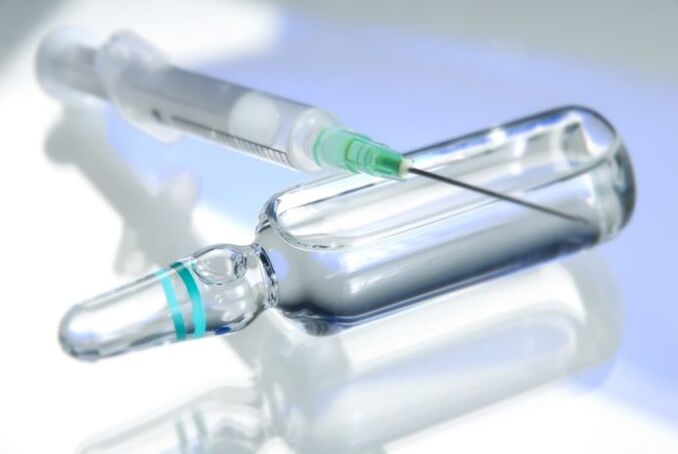
- HETEPOIDENE Anti -inflammatory drugs (NSAIDs).The main mechanism of action of these drugs is to slow down the inflammatory process and eliminate the pain.Cleansing tissues from dead cells does not occur.They alleviate the patient's condition, but do not slow down the progression of the process [3].These drugs are taken practicallyfor life, if there is no intolerance to them.In this case, side effects are often manifested: negatively affect the condition of the mucous membrane of the stomach and intestines and their prolonged usefraught with the development of gastritis, ulcers, ulcerative bleeding.Some NSAIDs negatively affect the cartilage, thus provoking the development of arthrosis [4].
- Hormonal drugs, which are usually introduced directly into the joint in the form of injection.They are used only according to the strict indications of the doctor and in extreme cases with severe pain, which is not eliminated by NSAIDs.Hormonal drugs suppress immunity, and accordingly the process of eliminating dead cells from the joints suffers.As a result of treatment, the intensity of inflammation decreases, a person feels relief.There are side effects: the production of own hormones is reduced, metabolic processes, etc., can be violated. When the joint is introduced into the joint cavity, the effects of side effects on the body, in general, are lower than when taking tablets, however, is also observed.The cause of the disease is not eliminated.
- Cytostatics- a group of antitumor drugs that violate growth, development and division mechanismsAll cellsorganism.In the treatment of rheumatoid arthritis, they reduce the amount of antibodies that kill their own cells of the body.However, the processes of the formation of other cells, including hematopoiesis, are also violated.Cleansing of fabrics does not occur.
Thus, anti -inflammatory drug therapy is aimed only at removing the symptoms of the disease, but not at the purification or nutrition of the joint tissues.The drugs only slow down, “freeze” the protective inflammatory process launched by the body.
The temporary elimination of pain is also dangerous because the patient ceases to “spare” the sore leg.And this exacerbates damage to the cartilage and bones.Therefore, the disease inevitably returns, and the pain only increases due to the occurrence of additional damage during the imaginary “lull”.And soon the only method is only the prosthetics of the joint.
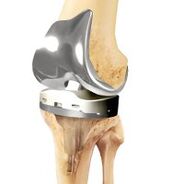
Joint prosthetics(replacement of the joint with artificial) - a complex, expensive, surgical intervention, in which serious postoperative complications are possible (infection, deep vein thrombosis, inflammation of the nerves, etc.).A prosthesis is an artificial device that can replace the function of a certain organ.If the prosthesis is located inside the human body, then it is called an endoprosthesis. Endoprosthetics of the joint is an operation to replace the joint components with implants, which have an anatomical shape of a healthy joint and allow the entire volume of movements.After such operations, the patient forgets about pain in the joints and returns to active life.The center conducts operations on the endoprosthetics of large (knee, hip, shoulder, elbow) and small (joints of the fingers) joints.When an infection is joined, osteomyelitis may develop, which requires the removal of the prosthesis and affected areas of bones.The functionality of the prosthesis is lower than that of the real joint.During falls and careless movements, dislocations, fractures of fragments of the artificial joint are possible, which requires a second operation.High risk of becoming a wheelchair disabled.
In order to attempts to restore cartilage, the composition of the synovial fluid, the following drugs are used:
- Chondroprotectors.They are assigned to restore the joint cartilage.These drugs (mainly about dietary supplements) are widely used.However, numerous studies showLack of effect even compared to placebo!
- Hyaluronic acid- An important component of cartilage.It is an important structural component of the cartilage matrix, protects it from wear.The drug based on it can be administered into the joint in the form of injections only after eliminating the inflammatory process.The cost of one injection depends on the concentration of the drug and the manufacturer, one course involves several injections.The introduction of this acid temporarily protects the joint from further damage.Howeveran artificially introduced drug does not stimulate the production of its own acidTherefore, the courses must be constantly repeated to maintain the effect.
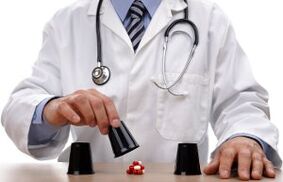
In addition to drug treatment, there are additional methods:
- laser therapy;
- cryotherapy (cold treatment);
- warming;
- magnetotherapy;
- electromyostimulation;
- phonophoresis (ultrasound);
- Treatment with gold -containing drugs, etc.
However, the effectiveness of these methods in terms of healing from arthritis and arthrosis under a big question [5], since theydo not ensure the elimination of the main reasonDiseases - violations of the balance between the destruction and restoration of the joint tissue.
A new understanding of the benefits of physiotherapy exercises (exercise therapy)
Medical exercises, aerobic training, swimming - an effective means of preventing and treating arthrosis.They are aimed at restoring the mobility of the joint and increasing blood flow in this area, and accordingly can stimulate the cleaning and restoration of the joint tissue.
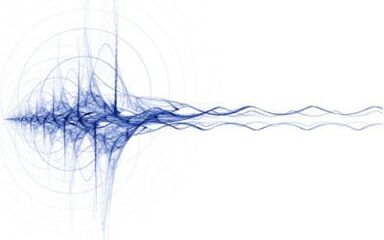
During physical exercises, workingmuscles create the energy of biological microvibration*which is necessary for transport and metabolic processes at the cellular level.Lymphatic and blood vessels are not suitable for every body of the body, to each micro-post.Cells do not have its own vehicles, therefore, to move and contact with each other, they need to “shake” them, which is ensured by the contractile activity of muscle fibers, that is, muscle work.
The muscles create the energy of micrivibration constantly (even during sleep), only power differs.The absence of microvibration indicates the death of a person.The level of microvibration, sufficient for nutrition and cleaning of all tissues, including joints, arises onlyWith physical muscle tension.
That is why exercise therapy is recommended in the treatment of arthrosis and has a healing effect.
Unfortunately,Medical physical education has serious restrictions:
- Exercise therapy can be carried out only after removal of inflammation during the remission;
- Exercises are not recommended for severe pain;
- People in old age have a whole bouquet of diseases or a serious joint degradation that no longer allow exercise;
- Peoplewith a large weightThey can only be done by a limited amount of physical exercises (in a lying position, sitting) to restore the hip and knee joints, since when walking and similar loads, the joints experience overload and continue to collapse;
- Exercise therapy will be effective in frequent regular classes, when classes alternate with periods of rest for the joint.As a rule, people are forced to go to work, have a number of family responsibilities that do not allow them to completely devote themselves (for a long time) only exercise therapy with periods of rest.
- Exercise therapy can be ineffective if arthrosis was a consequence of physical overload and dystrophic changes in tissues in the joint.Muscle cells are already depleted, and additional load can lead to their death.
- The exercise therapy does not solve the problem of restoring the conductivity of the nervous paths, that is, in the presence of diseases of the LFK spine, it will be ineffective, since nerve impulses will poorly reach the joint area.
Thus, exercise therapy is an effective treatment for arthrosis (but not arthritis) at not too old age with an unsuccessful stage of the disease in the absence of other aggravating diseases.
Cleaning and restoration of joint tissue using phonation
However, there is a way out of the situation!The energy of biological microvibration can be obtained from the outside using vibro -acoustic therapy (phonation).
Foning consists in transmitting sound microvibration (frequency range 30 - 20,000 Hz) into the body of a person or animal using a special compact medical apparatus.Such sound microvibrations are natural for the body: in their physical characteristics, they are similar to those biological microvibrations that create muscle tissue at maximum static physical stress.
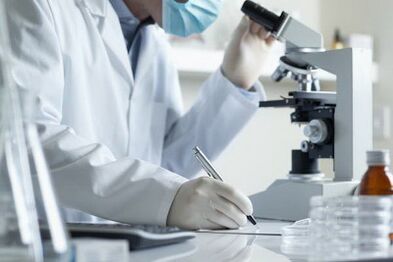
Thus, phoning, applicable at home, is this direct alternative to physical exercises.At the same time, the effect of such therapy is higher, since it is an external “clean” resource in relation to the body, and does not require its muscle costs.The energy of the microvibration is directed pointwise, to the area of the affected joint, to a depth of 10 cm. Due to the external source, muscle tissue depleted during the period of hypodynamia, physical overload, stress, hypothermia, restore their contractile activity, and therefore the necessary level of micrivibration (microdistan).
Despite its simplicity of exposure, phoning has numerous therapeutic effects:
- Improves lymph flow in the field of exposure, and, accordingly, helps to cleanse tissues and the early completion of the inflammatory process.ThisA unique propertyThe method of physiotherapy, which is inaccessible to drug therapy.At the moment, no drug can directly affect lymph flow.
- improves blood flow, and, accordingly, the nutrition of each cell;
- promotes joint lubrication;
- contribute to the exit from the depot of stem cells - the ancestors of all functional cells of the body, includingjoint tissue cells;
- Improves the conductivity of the nervous pathways with prolonged effects on the problem area of the spine.
In this case, phoning does not have a side effect, but has a long -lasting effect.
The effectiveness of phoning (vibro -acoustic therapy) in the treatment of joints was proved by numerous studies.
The scientifically proven effectiveness in the treatment of arthritis and arthrosis reaches 70-90% depending on the study.




















